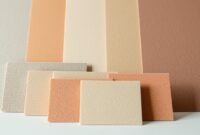Are you tired of fixes that don’t last? Home repairs can be a real challenge, with sealants failing at the worst times. Leaky pipes, cracked surfaces, and water damage can cost you a lot and harm your property.
Flex Seal promises a better solution. My research shows its true longevity. It’s a flexible coating that can handle tough conditions. It’s said to resist temperature changes and protect against water, making it a game-changer for DIY fans.
I’ll look into how Flex Seal compares to other sealants. Find out if it’s a real game-changer or just a marketing trick.
Understanding Flex Seal’s Durability Promise
Flex Seal sealant is known for its amazing ability to protect surfaces from water. It creates a flexible, watertight barrier. This makes it a top choice for waterproofing.
Key Components of Flex Seal
Flex Seal has special ingredients that make it work so well:
- UV-resistant materials for long-lasting protection
- Chemical-resistant properties
- Rubberized coating that adapts to surface movements
What Makes It Waterproof
Flex Seal’s waterproofing lasts a long time. It can be used on both wet and dry surfaces. It even cures underwater, making it better than regular sealants.
| Application Condition | Performance |
|---|---|
| Wet Surfaces | Fully Applicable |
| Underwater Curing | Possible |
| Surface Versatility | Multiple Materials |
Temperature Resistance Properties
Flex Seal can handle extreme temperatures. It works from 0°F to 150°F when applied. After curing, it stays strong from -40°F to 200°F. This shows it’s very adaptable to different environments.
- Application Temperature Range: 0°F to 150°F
- Cured Temperature Tolerance: -40°F to 200°F
- Consistent Performance Across Extreme Conditions
Real-World Applications and Performance
My experience with Flex Seal shows its amazing versatility. It’s a must-have for DIY fans and pros. It fixes home repairs and tackles tough sealing jobs.
Flex Seal comes in liquid and spray forms. This makes it easy to use on different surfaces and fix leaks. But, it’s important to apply it on a dry surface for the best results.
Read also: Does Flex Seal Work on Concrete Material?
- Recommended application techniques include:
- Cleaning the surface thoroughly
- Applying two coats for optimal strength
- Focusing on eliminating hairline cracks
- Using Flex Tape for additional reinforcement
Flex Seal works well in many places. It’s great for roofing and marine uses. It stays strong in tough conditions, keeping things protected.
| Application Type | Coverage | Curing Time | Temperature Resistance |
|---|---|---|---|
| Flex Caulk | 30-35 linear feet | 24-48 hours | -40°F to 200°F |
| Flex Paste | Varies by project | 24-48 hours | -40°F to 200°F |
With the right application, Flex Seal lasts a long time. It’s great for fixing many things because it can stretch and shrink with surfaces. But, make sure to prepare and apply it correctly to get the most out of it.
Read also: How to Fix Hairline Crack in Fiberglass Tub
How Long Does Flex Seal Last on Different Surfaces
Flex Seal liquid’s durability is key when used on various surfaces. Its versatility makes it a go-to for many sealing tasks. It works well on different materials and conditions.
Flex Seal is great for many uses. Its special formula protects thoroughly. It fills in cracks and forms a strong seal, ready for tough conditions.
Indoor Applications Lifespan
Inside, Flex Seal lasts a long time. It keeps surfaces safe for years with proper use. It’s perfect for stopping leaks in homes.
Outdoor Exposure Duration
- Withstands temperatures from -40°F to 200°F
- Takes 48 hours to fully cure
- Provides robust protection against environmental challenges
Outdoors, Flex Seal needs more checks. UV rays and harsh weather can affect it. Check the seal every year to keep it working well.
Marine Environment Performance
Flex Seal excels in marine environments. It’s great for boats, docks, and underwater fixes. It keeps water out, even with salt and moisture.
| Environment | Expected Lifespan |
|---|---|
| Indoor | 3-5 years |
| Outdoor | 1-3 years |
| Marine | 2-4 years |
Knowing how Flex Seal performs on different surfaces helps. It ensures your seal lasts longer and works better in various places.
Proper Application Techniques for Maximum Longevity
Getting Flex Seal right is key for its best performance and lasting power. I’ve learned that prep and technique are everything in sealing projects.

First, I clean and dry the surface as much as I can. Flex Seal works best on dry surfaces. If liquid gets into cracks, it seals better, so prep is key.
- Clean the surface thoroughly
- Remove any loose debris or old sealant
- Ensure the area is dry before application
Using extra coats is a smart move for extra protection. I apply thin, even layers, not one thick coat. Let each layer dry fully before adding more. This usually takes 24-48 hours.
| Application Step | Recommended Technique |
|---|---|
| First Coat | Thin, even application |
| Drying Time | 24-48 hours between coats |
| Final Step | Fully cured before testing |
Temperature affects how well you can apply Flex Seal. The best results are in temperatures between 0°F and 150°F. Better air flow can speed up drying, saving time.
Pro tip: Always test Flex Seal on a small, hidden area first. This shows how it works with your surface and ensures the best results for your project.
Weather Resistance and Environmental Factors
When we talk about flex seal lifespan, it’s key to know how it holds up in different weather. My own use of this sealant shows it’s really tough in tough weather.
UV Ray Protection Capabilities
Flex seal is amazing at fighting off UV damage. Its blue brite brown mix keeps surfaces safe from the sun’s harm. This means it lasts longer, even when it’s in direct sunlight.
- Maintains structural integrity under intense sunlight
- Prevents color fading and material breakdown
- Provides consistent protection across different environments
Temperature Fluctuation Impact
Changes in temperature can really test a sealant’s limits. But flex seal does great, staying strong from -40°F to 200°F after it’s fully cured.
- Remains flexible during temperature changes
- Prevents cracking or separation
- Adapts to surface expansion and contraction
Moisture Exposure Effects
Being water-resistant is super important for sealants. Flex seal makes a strong waterproof shield. It keeps surfaces safe from rain, humidity, and moisture.
Thanks to its strength in many weather conditions, flex seal is a top choice for both inside and outside use.
Maintenance Requirements and Care Tips
Keeping your waterproof coating in top shape is key. I’ve learned from my lasting sealant review that the right care can make Flex Seal last longer.
For the best results, follow these important maintenance tips:
- Check sealed areas every 3 months for wear
- Wash treated spots with mild soap every 6 months
- Keep dirt away to avoid damage
- Look for cracks or where the seal might break
How well it works depends on where it’s used. Outdoor spots need more upkeep than indoor ones.
| Environment | Recommended Inspection Frequency | Potential Reapplication Need |
|---|---|---|
| Indoor Dry Areas | Every 12 months | Low |
| Outdoor Moderate Climate | Every 6 months | Medium |
| Marine/Extreme Conditions | Every 3-4 months | High |
For reapplying, clean well, remove old stuff, and follow the original steps. Good care keeps your Flex Seal working well.
- Use mineral spirits for cleaning
- Make sure it’s well-ventilated when you maintain it
- Keep unused products in a cool, dry place
With these care tips, your waterproof coating will last longer and work better.
Common Issues That Affect Flex Seal’s Lifespan
Using a weather resistance sealant like Flex Seal can be great. But, knowing the challenges can help you get the most out of it. I’ll share the key factors that might affect its performance and how to steer clear of them.
Surface Preparation Mistakes
Getting the surface right is key for Flex Seal to work well. Mistakes can make it less effective:
- Failing to clean the surface thoroughly
- Neglecting to remove old sealant or debris
- Applying on wet or uneven surfaces
- Skipping surface roughening for better adhesion
Application Errors
Wrong ways of applying can hurt the sealant’s performance:
- Applying too thick or too thin a layer
- Not allowing sufficient curing time
- Ignoring recommended temperature ranges
- Uneven or inconsistent coating
Environmental Challenges
Things outside can also affect Flex Seal’s durability:
| Environmental Factor | Potential Impact |
|---|---|
| UV Exposure | Accelerated degradation |
| Temperature Fluctuations | Reduced flexibility and adhesion |
| Chemical Exposure | Potential breakdown of sealant |
| Moisture Levels | Potential adhesion issues |
Knowing these common problems can help your Flex Seal last longer. This way, you’ll have more reliable leak-proof solutions.
Comparing Flex Seal to Traditional Sealants
Flex Seal is a game-changer in the world of sealants. It offers big advantages over traditional sealants that people have used for years. This innovative solution is a must-have for homeowners and DIY fans.

Traditional sealants often don’t perform well, even in tough conditions. Flex Seal’s rubberized formula is flexible and durable. It stands out from other sealants.
Key Comparison Points
- Coverage: Flex Seal provides 30-35 linear feet per container
- Temperature Resistance: -40°F to 200°F after full cure
- Application Range: Works in temperatures from 0°F to 150°F
- Curing Time: 24-48 hours for complete seal
How long does flex seal last? It lasts much longer than traditional sealants. Its ability to stretch and shrink with surfaces makes it perfect for both inside and outside use.
| Characteristic | Flex Seal | Traditional Sealants |
|---|---|---|
| Temperature Resistance | -40°F to 200°F | Limited Range |
| Flexibility | High Flexibility | Minimal Expansion |
| Typical Lifespan | Multiple Years | 1-2 Years |
If you’re looking for a reliable, long-lasting sealant for extreme conditions, Flex Seal is the best choice. It outshines traditional sealants in many ways.
Cost-Effectiveness Over Time
At first glance, Flex Seal might seem pricier than other sealants. But, its long-lasting quality makes it a smart choice for those watching their budget. It’s perfect for homeowners and DIY fans who want to save money.
Flex Seal’s long life is a big plus. It offers several economic benefits:
- Reduced reapplication frequency
- Lower maintenance costs
- Extended protection for various surfaces
- Prevention of possible water damage
Think about how long Flex Seal lasts. It can protect roofs for up to ten years. This means big savings over time, avoiding the need for frequent fixes or new coatings.
| Application Area | Estimated Lifespan | Cost Savings |
|---|---|---|
| Metal Roofs | 10-30 years | High |
| Asphalt Shingles | 7-15 years | Moderate |
| Outdoor Structures | 5-10 years | Moderate |
Flex Seal is a great deal, but it’s not a fix-all for every problem. Knowing when and how to use it is key to getting the most value.
Conclusion
Exploring Flex Seal’s lasting power, I found it offers unique sealing abilities with some limits. It gives temporary waterproof protection but has specific performance areas. Users need to know its boundaries in different settings.
The sealant’s endurance depends on how it’s applied and the environment. In the best cases, Flex Seal can last for months. But, it’s not a fix for big structural problems. It’s great for small cracks and leaks, perfect for DIY fans needing a quick fix.
Experts say Flex Seal is good for short-term fixes, not long-term solutions. Knowing its temperature and pressure limits, and how to apply it right, helps users get the most out of it. This way, they won’t expect too much from it.
Flex Seal is a new product with certain uses. Applying it wisely, preparing the surface well, and knowing its limits are key. This way, users can use its special sealing abilities to their advantage.


